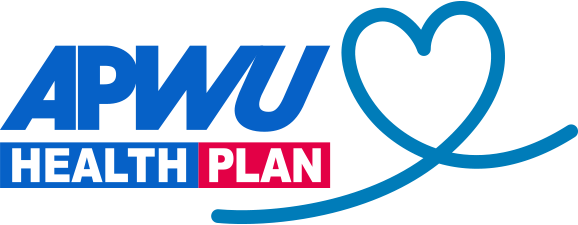Heart disease is the No. 1 killer of women in the United States. In fact, according to the American Heart Association, heart disease—also known as cardiovascular disease—and stroke cause 1 in 3 women’s deaths each year, claiming the life of approximately one woman every 80 seconds. It’s the most common cause of death for men, too, but some of the symptoms and warning signs of heart disease differ between men and women. And, it doesn’t affect all women alike. Fortunately, as a woman, you can take steps to understand the symptoms and reduce your risk of heart disease.
How common is heart disease in women?
Consider the facts about women and heart disease:
- In the U.S., an estimated 44 million women are affected by heart disease.
- 90% of women have one or more risk factors for heart disease.
- Lifestyle changes and education could prevent 80% of heart disease and stroke events.
Hispanic women are likely to develop heart disease 10 years earlier than white women. Moreover:
- Heart diseases are the leading cause of death for Hispanic women, killing nearly 21,000 each year.
- Only 34% of Hispanic women know that heart disease is their greatest health risk.
About half of African American women are aware of the signs of a heart attack. In addition:
- Heart diseases are the leading cause of death for African American women, killing more than 48,000 each year.
- Only 36% of African American women know that heart disease is their greatest health risk.
Is there more than one type of heart disease?
Heart disease can take many different forms:
Atherosclerosis (hardening of the arteries) is a condition that develops when plaque builds up in the walls of the arteries—the vessels that carry oxygen-rich blood to your heart and other parts of your body. Plaque is made up of fat, cholesterol, calcium, and other substances. As the arteries narrow, it’s harder for blood to flow. If a blood clot forms, it can stop the blood altogether and cause a heart attack or stroke.
Heart failure (or congestive heart failure) is a condition in which the heart still works but isn’t pumping blood as well as it should.
Arrhythmia (an abnormal heart rhythm) is a condition where the heart beats too fast, too slowly, or irregularly. This can affect how well the heart functions and whether or not the heart can pump enough blood to meet the body’s needs.
Heart valve problems can lead to the heart not opening enough for proper blood flow. Sometimes the heart valves don’t close and allow blood to leak. Other times the valves bulge, causing blood to flow backward. This, in turn, can cause a heart murmur.
What are the warning signs that a woman is having a heart attack?
We tend to think of crushing chest pain as a sure sign of a heart attack, but the symptoms can be more subtle in women. During a heart attack, a woman may experience chest pain, but it’s not always severe and may not be the most prominent symptom. Some women may have a heart attack without any chest pain at all.
In women, the warning signs of a heart attack include:
- Pressure or tightness in the chest
- Discomfort in the neck, jaw, shoulder, upper back, or abdomen
- Shortness of breath
- Pain in one or both arms
- Nausea or vomiting
- Sweating
- Lightheadedness or dizziness
- Extreme fatigue
These symptoms can occur when a woman is resting or asleep. Stress can also trigger heart attacks in women.
If you experience any of these symptoms or think you’re having a heart attack, call 911 immediately.
What are the risk factors for heart disease in women?
Men and women share many of the same risk factors for heart disease, including high cholesterol, high blood pressure, and obesity. For women, however, other factors may play a larger role in the development of heart disease:
Diabetes. Women with diabetes are at greater risk of heart disease than are men with diabetes. Moreover, diabetic women are two times more likely to have a second heart attack than women without diabetes.
Smoking. Women who smoke have a 25% higher risk of developing heart disease than men who smoke.
Physical inactivity. A lack of exercise is a major risk factor for heart disease. According to the Mayo Clinic, some research has found women to be more inactive than men.
Menopause. Estrogen can help increase the flexibility and strengthen the interior walls of arteries. Low levels of estrogen after menopause pose a significant risk factor for developing heart disease.
Pregnancy complications. Pregnancy stresses the heart and circulatory system. Women with certain heart conditions, including heart rhythm issues, heart valve issues, and congestive heart failure, need to take special care during pregnancy.
What can women do to reduce their risk of heart disease?
Making simple lifestyle changes can help reduce your risk of heart disease:
- Quit smoking
- Exercise regularly
- Maintain a healthy weight
- Eat a healthy diet
- Get your blood pressure under control
- Lower your cholesterol
- Know your family history
What if I don’t have time for exercise?
Getting regular exercise doesn’t mean you have to join a gym or take an aerobics class. Think of it as a game where the goal is to find creative ways to increase your physical activity throughout the day. Take the stairs instead of the elevator. Park as far as you can from the entrance to the grocery store. Put on some fun music and dance with your kids. Plant a garden. Do ten pushups during commercial breaks.
You don’t have to cram all of your physical activity into one session. Try breaking it up into several 10-minute sessions during the day. Every little bit adds up. And, you’ll still get the same heart-health benefits.
Of course, always check with your doctor before you start exercising.



